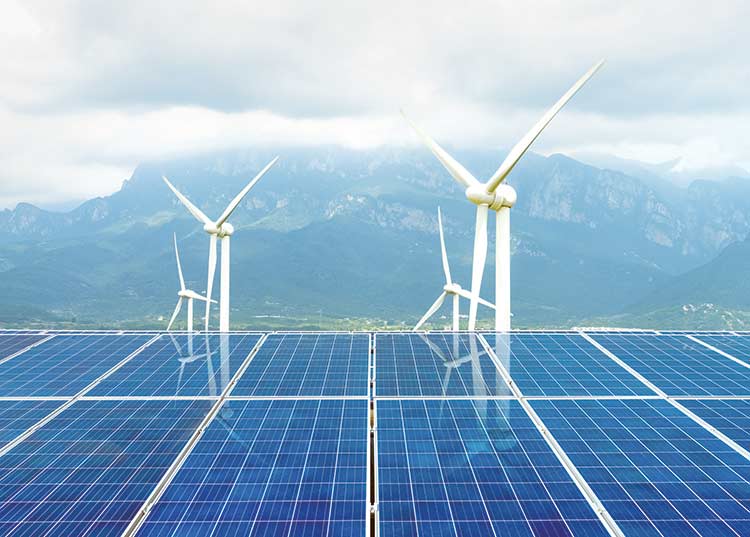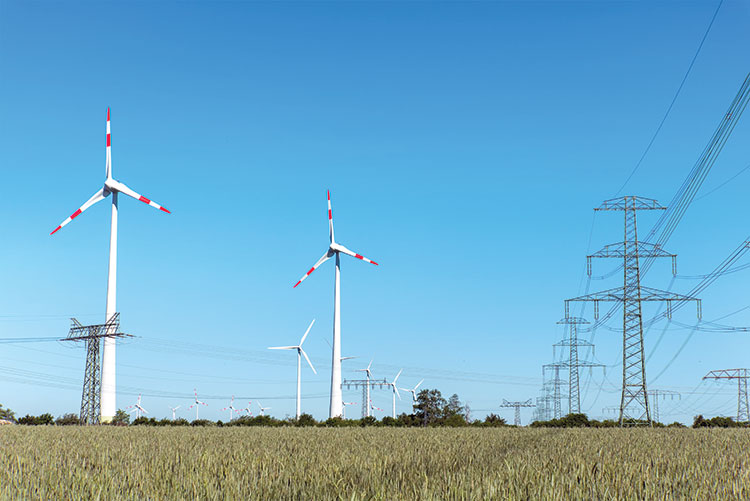The key factor in the success of implementing energy policies and plans is the accepting of the paradigm shift in the development of the energy sector among key social actors – policymakers and political decision makers. Joining the EU Green Deal enables the region’s countries to develop a modern, environmentally friendly, competitive and regionally integrated energy system, and to attract foreign direct investment in industrial production, especially production intended for export.
The countries of the Western Balkans lag behind in energy transition, and now – with the establishing of the European Green Plan – the European Union has set them the new challenge of harmonising their own national energy and climate plans.
How ready is Serbia for that challenge at this juncture?
Serbia is, in my opinion, increasingly more ready for the challenges imposed by the objective situation in an electricity sector that’s dependent on lignite, on the one hand, and, on the other, more ready to the activities arising from the Green Deal, which should result in a new National Energy and Climate Plan.
The reasons for this mild optimism are primarily in the domain of changing prevailing attitudes and considerations in both professional circles and the wider social sphere. Until just a few years ago, only isolated individuals were speaking about the necessity of decarbonisation (abandoning fossil fuels, primarily meaning lignite in our country), or the need to switch to Renewables. This is no longer an individual opinion , but rather, I would say, the dominant reasoning. Shifting consciousness in the energy sector is an imperative due to the poor quality of air in cities and revelations about the negative impact of the operations of thermal power plants on the health of the population and on the environment as a whole. An additional reason for optimism is provided by the regulatory framework, as a set of new laws in the energy sector has put a meaninhgful limit on future contours in this sector. And finally, the last reason is the growing interest in constructing renewable sources among investors.

And in spite of declarative commitments in international forums, energy transition still hasn’t been broadly accepted as the backbone of the energy strategy in Serbia. The results of the 2020 survey of the World Economic Forum, in which the Energy Transition Index (ETI) ranks the readiness of countries to implement the decarbonisation process, indicate a low level of readiness to implement this complex process among the countries of the region. Of the 115 countries ranked, Serbia is in 100th place, and it can thus be seen that the decarbonisation process isn’t recognised as a development opportunity.
The key factor in the success of implementing energy policies and plans is the accepting of the paradigm shift in the development of the energy sector among key social actors – policymakers and political decision makers. Joining the EU Green Deal enables the region’s countries to develop a modern, environmentally friendly, competitive and regionally integrated energy system. The construction of this kind of energy infrastructure will quickly lead to the initiating of essential investments in the modernisation of energy and enable the attracting foreign direct investment in industrial production, especially production intended for export.
An important characteristic of the energy transition over the last few years has been the speed of change… A MWh produced today at a solar power plant in our region is significantly cheaper than a MWh produced at a coal-fired thermal power plant!
Strong dependence on fossil fuels, low energy efficiency, outdated infrastructure and problematic environmental protection – how accurate a description of Serbia today is this?
This is an almost completely accurate description of the energy sector in Serbia. Specifically, it is common knowledge that the energy sector is certainly among the most important economic branches in Serbia.
The concept of today’s energy was, until recently, based on the economic paradigm of the 1970s, which is characterised by the energy-intensive and inefficient use of energy in the heating and transport sectors, and among the end users of electricity. In the generating of electricity Serbia relies predominantly on low-efficiency thermal power plants fuelled by local lignite. That’s why the energy sector is such a major polluter of air, water and land at the local and regional levels, and why it endangers the environment and human health. The energy sector in the region also has a dominant impact on emissions of greenhouse gases (GHG), with a share in total emissions exceeding 70%. Alongside all of this is the fact that some of the thermal power plants are more than 60 years old, and that Kostolac B2 (as the youngest unit) has been in operation for over 30 years, that some substations are over 50 years old and the age structure situation is similar with many transmission lines. This leads to the conclusion that equipment is outdated and that the extremely old infrastructure is difficult and expensive to maintain. So, the situation must change and we must embark on the energy transition journey!
The energy structure of Serbia today cannot satisfy the requirements of sustainable development in the 21st century. These are also the reasons why Serbia is lagging behind in the energy transition.
How well does the Low Carbon Strategy of the Republic of Serbia respond to the challenges of decarbonisation; and what is necessary to ensure its implementation?
The strategy was adopted in 2017, and given that technological changes have come very fast in recent years and implementation hasn’t progressed very far, it is certain that we will have to amend this document. Already during the course of 2021, all countries of the region should draft several strategic documents for sustainable, low-emission development. We can thus expect the adoption of the Strategy for Adaptation to Climate Change and Low-Emission Development, with a proposal to innovate the goals vis-à-vis the Paris Agreement and the National Energy and Climate Plan (NECP), in accordance with the decisions of the Energy Community.
Where should efforts start when it comes to reducing carbon dioxide emissions, from individual combustion boilers of citizens or major producers of energy (and pollutants)?
It is necessary to launch the process of reducing carbon dioxide emissions on all fronts simultaneously. It is also important to stress that the electrification of the transport and heating sectors can and must contribute significantly to the decarbonisation process. The transition to electric vehicles, or to transport with green hydrogen as a fuel, are processes that must be encouraged and controlled . Total decarbonisation implies transitioning to an energy system with 100% renewable sources (zero emissions) and no longer represents an energy dream, but rather has been confirmed practically with many examples.

It is undeniable that realising this goal globally will not be a simple task, but it can be led successfully with modern technological solutions around system flexibility and the variability of production from wind farms, solar power plants and hydropower plants. We still have to point out here the special importance of energy storage under circumstances where a high share of production comes from Renewables. Storage with the help of pumped hydro storage , with the help of conversion of electricity into heat (through underground heat storage), with the help of conversions of excess electricity into green hydrogen, widespread use of utility scale batteries at the systemic level and the use of electric car batteries as a power source (according to the requirements of system operators) provide large technological and technical possibilities for the optimal operation of energy systems.
The demand response , as the cheapest source of flexibility, stands as a particularly important option, while the widespread use of heat pumps enables the almost complete electrification of the heating sector.
In which ways are requirements in the energy sector harmonised with requirements related to the environment?
Energy transition implies the process of abandoning fossil fuels and switching to renewable energy sources. The list of Renewables is dominated by the sun and wind, but there are also important hydro potentials, as well as the potential of biomass and geothermal energy. This transition is not a process that ends in a few years, rather it will last a few decades and in essence it is essential to enable a gradual transition of the working population from the fossil fuel sector to the sector of low carbon economy, dominated by Renewables, through the creation of jobs, i.e. through the developing of a sustainable circular economy. In zeroemission energy systems, environmental aspects are reduced to minimising the impact of wind farms and other power plants on the environment. These new jobs opportunities are of one order of magnitude higher than job losses caused by the thermal energy sector reduction. The economy and citizens must certainly adapt to energy transition processes through more energy efficient use of Renewables in a low-carbon economy, as well as through changing habits to include the intensive use of electric cars, heat pumps etc.
An important characteristic of the energy transition over the last few years has been the speed of change, which is reflected specifically in the reduction of prices of technologies based on solar and wind energy.
The fact is that a MWh produced today at a solar power plant in our region is significantly cheaper than a MWh produced at a coal-fired thermal power plant!
Equipment in the electrical energy sector is outdated and infrastructure is extremely old and difficult and expensive to maintain. So, the situation must change and we must embark on the energy transition journey!
You recently commemorated the centenary of the work of the Association of Energy Sector Specialists, as a professional organisation in Serbia. How much knowhow does Serbia have in this domain?
The Association of Energy Sector Specialists is one of the oldest, if not the oldest, professional organisation, which – according to data available from the Business Registers Agency – was founded back in 1919. It has gone through several development stages in the process of numerous institutional and organisational changes, only to remain today as an independent professional organisation, and a platform where all parts of the energy sector come together and complement each other in one place, with the task of formulating common objectives.
Serbia has the required academic and applied knowhow in the energy sector. This knowhow has been verified through papers published in recognized world journals and through real practical projects. The successful management of our energy system also confirms that knowhow.
At the traditional 36th ENERGETIKA2021 conference, to be held on Zlatibor mountain from 22nd to 25th June 2021 under the title
MEETING THE GREEN RECOVERY, we will endeavour – through panel discussions and works – to highlight the optimal trajectories of energy transition.
How important is digital transformation for this sector?
Digitalisation, or the broader concept of introducing smart grids or smart infrastructure, is a conditio sine qua non of energy transition. The first link in the digitalisation of networks was the smart meter, and today, downstream from the meter, there are smart devices and home appliances equipped with IP addresses that participate in the regulating of consumption (an extended version of the Internet of Things), and upstream from the meter, at the level of substations and plants, are concentrators, sensors etc., all with the task of monitoring and optimal operation of the electricity network, and with maintaining operational safety.